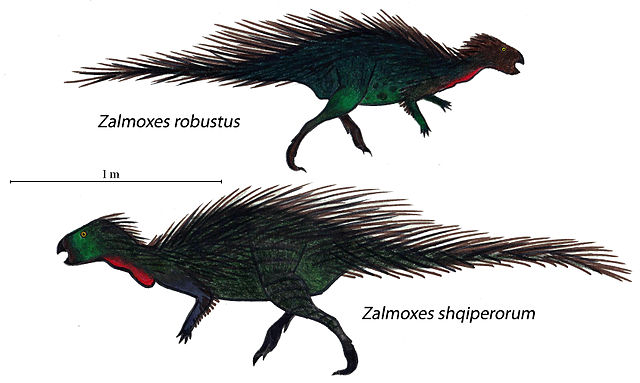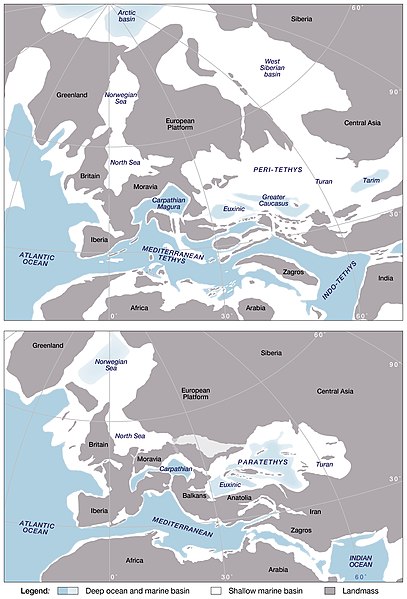Hațeg Island was a large offshore island in the Tethys Sea which existed during the Late Cretaceous period, probably from the Cenomanian to the Maastrichtian ages. It was situated in an area corresponding to the region around modern-day Hațeg, Hunedoara County, Romania. Maastrichtian fossils of small-sized dinosaurs have been found in the island's rocks. It was formed mainly by tectonic uplift during the early Alpine orogeny, caused by the collision of the African and Eurasian plates towards the end of the Cretaceous. There is no real present-day analog, but overall, the island of Hainan is perhaps closest as regards climate, geology and topography, though still not a particularly good match. The vegetation, for example, was of course entirely distinct from today, as was the fauna.
A restoration of Balaur bondoc and the forest vegetation found in Hațeg Island
Reconstruction of Zalmoxes robustus, a herbivorous dinosaur from the Hațeg Island ecosystem
The Tethys Ocean, also called the Tethys Sea or the Neo-Tethys, was a prehistoric ocean during much of the Mesozoic Era and early-mid Cenozoic Era. It was the predecessor to the modern Indian Ocean, the Mediterranean Sea, and the Eurasian inland marine basins.
Vast regions of Europe and west-central Asia were still covered by a contiguous Tethys at the start of the Eocene (top image), but by the Oligocene, most of this had dried out (bottom image), and the Tethys was almost entirely divided into the Indian Ocean, Mediterranean and Paratethys.
Geologist Eduard Suess in 1869




